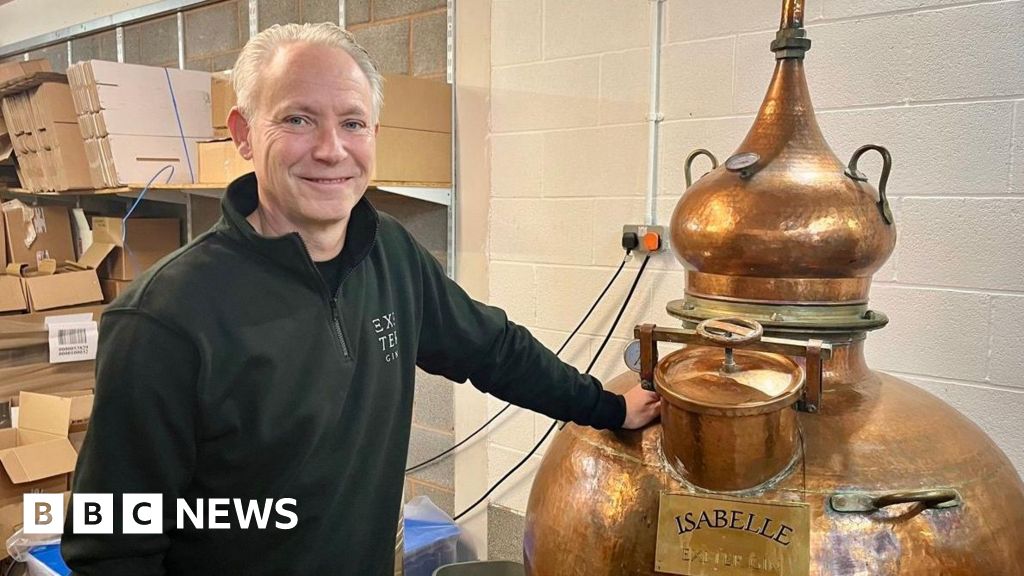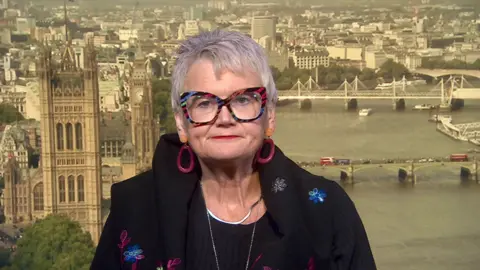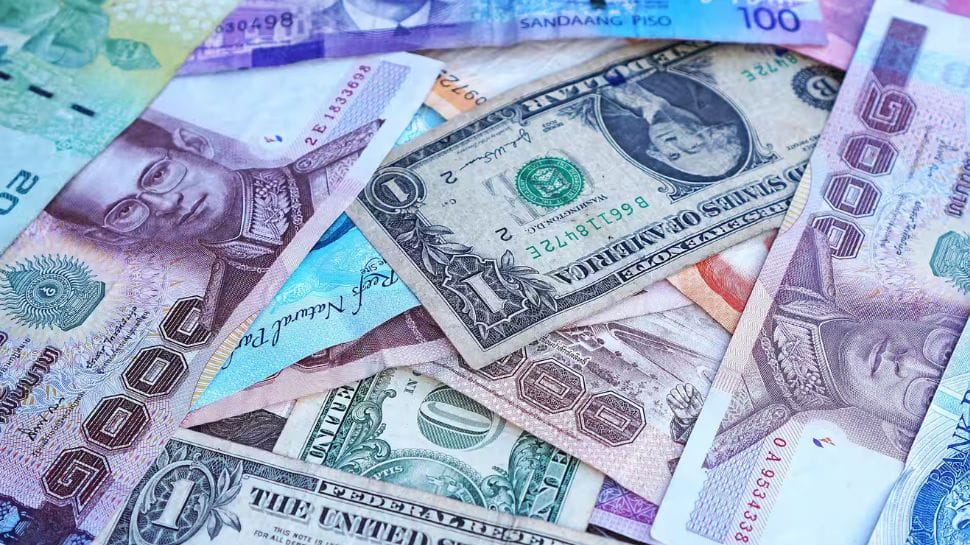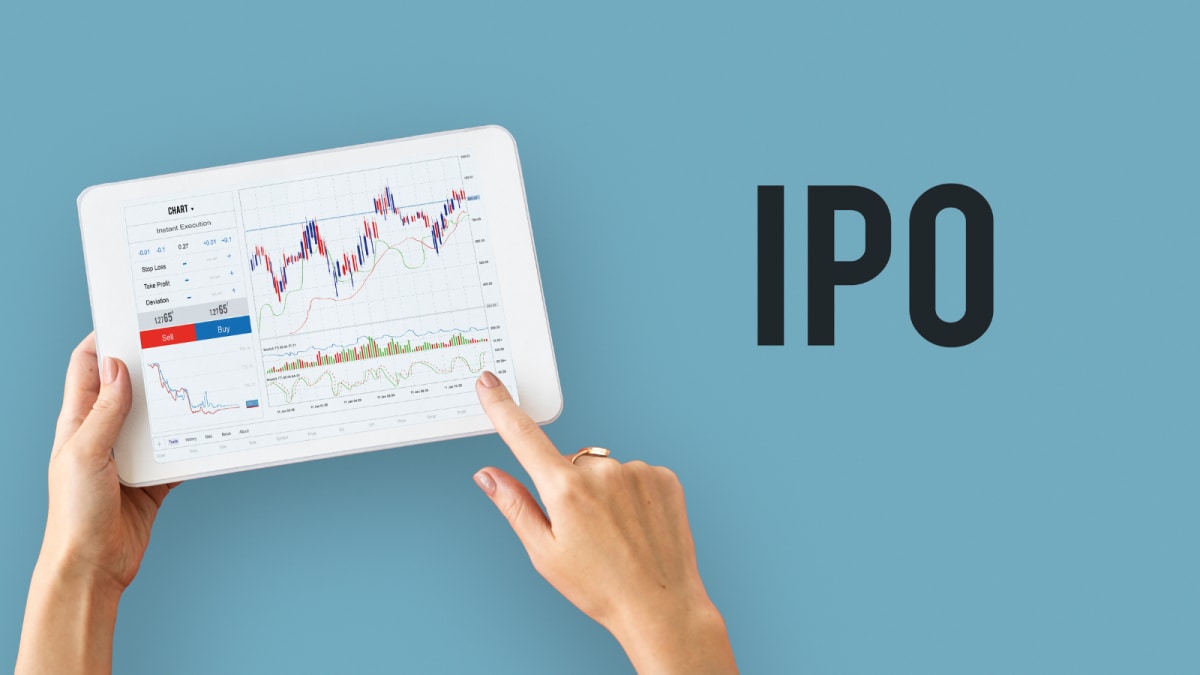Business
Canara HSBC IPO: Insurance firm sets price band at Rs 100 to Rs 106; targets Rs 10,000 crore valuation – The Times of India

Canara HSBC Life Insurance Company Ltd on Tuesday announced the price band for its upcoming IPO, setting it at the range of Rs 100 to Rs 106 per share, targeting a valuation of about Rs 10,000 crore at the upper end.The insurer’s Rs 2,516-crore public offering will open for subscription on October 10 and close on October 14. Bidding for anchor investors is scheduled for a single day on October 9, according to a public announcement.Canara HSBC Life’s IPO will be a full offer for sale (OFS), with promoters and an investor putting up a total of 23.75 crore shares. Canara Bank is set to sell 13.77 crore shares, HSBC Insurance (Asia-Pacific) Holdings Ltd will sell 47.5 lakh shares, while Punjab National Bank plans to offload 9.5 crore shares.As this is an OFS, Canara HSBC Life will not receive any money from the IPO, instead the proceeds will go entirely to the selling shareholders, PTI reported.Investors can bid for a minimum of 140 shares and in multiples of 140 thereafter. Canara HSBC Life is expected to list on the stock market on October 17.Since its incorporation in 2007, the company has grown into a leading bank-backed private player in India’s life insurance sector. For this IPO, 50% of the shares are reserved for qualified institutional buyers (QIBs), 35% for retail investors, and the remaining 15% for non-institutional investors. Canara HSBC Life is a joint venture promoted by Canara Bank, which holds a 51% stake, and HSBC Group’s HSBC Insurance (Asia Pacific) Holdings, which owns 26%. Canara Robeco Asset Management is also launching its IPO, open for subscription from October 9 to 13. In December last year, Canara Bank had received approval from the Reserve Bank to divest its stake in its life insurance and mutual fund businesses.
Business
Eli Lilly hits $1 trillion market value, a first for a health-care company

A sign with the company logo sits outside of the headquarters of Eli Lilly in Indianapolis, Indiana, on March 17, 2024.
Scott Olson | Getty Images
Eli Lilly reached a $1 trillion market capitalization on Friday, the first health-care company in the world to join the exclusive club dominated by tech firms.
Eli Lilly briefly hit the $1 trillion mark in morning trading before retreating. It was last trading around $1,048 a share. Eli Lilly is the second nontechnology company to reach the coveted $1 trillion mark in the U.S. after Warren Buffett‘s Berkshire Hathaway.
The drugmaker’s stock has climbed more than 36% this year as investors applaud the gains it has made over chief rival Novo Nordisk in the GLP-1 drug space. The Indianapolis-based company’s stock has been riding the skyrocketing popularity of its weight loss injection Zepbound and diabetes treatment Mounjaro.
Eli Lilly’s stock has soared on the back of the success of its drugs Mounjaro and Zepbound.Demand is only expected to grow as approvals for the treatments’ uses and insurance coverage expand.
The two drugs have driven eye-popping sales growth for Eli Lilly. Last month, the company said Mounjaro drew in $6.52 billion in revenue in the third quarter, a 109% increase from the previous year. Meanwhile, Zepbound posted $3.59 billion in sales during the period, a 184% spike from the prior-year period.
Demand for the treatments will only grow as approvals for their use and insurance coverage expand. In addition, Eli Lilly expects an oral version of its popular drugs to hit the market next year, which could give patients a more convenient option than a shot that is easier for the company to produce.
Eli Lilly will likely remain a dominant player in the weight loss drug market, which some analysts believe could be worth more than $150 billion by the early 2030s.
But despite its recent struggles and leadership shake-ups, Novo Nordisk remains a formidable rival for Eli Lilly in the space. Pfizer also made a push forward in the market, as well, when it won a $10 billion bidding war with Novo Nordisk for obesity drugmaker Metsera earlier this month.
The runaway success of Zepbound, Mounjaro
Eli Lilly, a pharmaceutical chemist and Union veteran of the U.S. Civil War, founded his namesake company in 1876. It has long been at the forefront of the diabetes treatment space, introducing the world’s first commercial insulin in 1923.
Eli Lilly became a publicly traded company on the New York Stock Exchange by 1952, and for decades relied on a slate of widely successful products to drive much of its profits and revenue. That included insulins, the antidepressant pill Prozac and the earliest polio vaccine.
An Eli Lilly & Co. Zepbound injection pen, March 28, 2024.
Bloomberg | Bloomberg | Getty Images
Eli Lilly hit the jackpot with the May 2022 approval of tirzepatide for diabetes, which is sold as Mounjaro. It started to compete with Novo Nordisk’s diabetes injection Ozempic, which had entered the market a few years earlier.
But Eli Lilly brought a new way to treat diabetes and eventually, obesity. Tirzepatide works by imitating two hormones produced in the gut called GLP-1 and GIP. GLP-1 helps reduce food intake and appetite. GIP, which also suppresses appetite, may also improve how the body breaks down sugar and fat.
Meanwhile, Novo Nordisk’s semaglutide, the active ingredient in Ozempic and its weight loss drug Wegovy, only targets GLP-1.
Mounjaro achieved “blockbuster” status — meaning it generated more than $1 billion in annual sales — during its first full year on the market. Eli Lilly then won approval in late 2023 for tirzepatide as a treatment for obesity, which is sold as Zepbound and now competes with Novo Nordisk’s Wegovy.
By 2024, Mounjaro pulled in $11.54 billion in sales, while Zepbound posted $4.93 billion in revenue.
Business
Devon gin maker fears further tax increase in Budget

Miles DavisDevon political reporter
 BBC
BBCA gin producer and drinks maker is concerned the chancellor might increase tax on spirits again in the Budget.
The previous Conservative government increased excise duty by more than 10% in August 2023 and Labour increased the tax by another 3.65% in 2024.
Mick Skerratt from Exeter Gin said another increase in duty would be a tough blow to take at a time when all other production costs are increasing.
HM Treasury said the majority of UK spirits were exported and so not liable for UK alcohol duty.
Mr Skerratt said: “It would put a massive pressure on us as a business and also to our customers.
“There’s only so far that a margin can stretch and profitability will be affected.”
The gin producer said the spirits industry was being “used as a bit of a cash cow for the government”.
He said: “We’re in a cost of living crisis and there’s a tipping point to what people are prepared and able to pay and it doesn’t help anybody – it doesn’t help the consumer and it doesn’t help us as a small business.”

The All-Party Parliamentary Group (APPG) on UK Spirits, which was set up to support the industry, said the number of distilleries in the UK had tripled in the past seven years, from 350 to 1,050, which it described as “a modern British success story”.
The group said excise duty accounted for about 70% of the price of an average bottle of spirits sold in the UK.
The group’s chairwoman, Labour MP Carolyn Harris, called for a complete freeze on excise duty in Wednesday’s Budget and for the remainder of this Parliament.
She said: “By not freezing duty we’re putting all distillers in a position whereby they’re going to have their business threatened or they’re going to create unemployment which would be no good for the economy.
“It makes sense to me to freeze the duty so at least the industry can move on from where they are now and start to thrive and survive.”

Duty on beer has been frozen or reduced at every Budget for the last 12 years and the APPG said the discrepancy in changes to taxation on beer and spirits was unfair.
Brewery boss Alan Collyer said any changes to duty on beer had little impact compared to the wider problems facing small businesses.
Mr Collyer, owner of Exeter Brewery, said: “These pennies here and there really don’t make a significant enough difference to drive people back to pubs.
“You’ve got the contrast between very cheap alcohol in the supermarkets compared to increasing costs of a pint of beer in a pub and it would need substantive change to make people think it was worth going back to the pub again.”
A spokesperson for HM Treasury said “our distilleries are vital to Britain’s economy”.
“We’re making it easier for them to thrive: no export duty, lower licensing fees, reduced tariffs, and a cap on corporation tax,” they said.
Business
India’s Forex Reserves surge By $5.54 Bn To $692.58 Billion

New Delhi: India’s foreign exchange (Forex) reserves surged by $5.54 billion to $692.58 billion during the week ended November 14, according to the figures released by the RBI on Friday. The increase was driven largely by a jump in the value of the gold component of the country’s Forex kitty that shot up by as much as $5.34 billion to touch $106.86 billion during the week.
This increase mainly reflects a rise in global gold prices, as the RBI’s gold is valued according to the price movement in the global market. Foreign Currency Assets (FCAs), which comprise the largest component of the Forex reserves, recorded an increase of $152 million to touch $562.29 billion.
The smaller components of the foreign exchange reserves, constituted by Special Drawing Rights (SDRs) rose by $56 million to $18.65 billion while the reserves with the IMF went up $8 million, to touch $4.78 billion. India’s foreign exchange reserves are sufficient to fund more than 11 months of goods imports and about 96 per cent of external debt outstanding, RBI Governor Sanjay Malhotra said recently.
The RBI Governor said, “Overall, India’s external sector remains resilient as key external sector vulnerability indicators continue to improve. We remain confident of meeting our external financing requirements.”
The share of gold in India’s foreign exchange reserves has almost doubled over the past decade, from below 7 per cent to nearly 15 per cent, reflecting both steady central bank accumulation and a surge in global bullion prices. This is the highest proportion of gold in the country’s total reserves since 1996-97, according to market analysts.
Gold prices have shot up by as much as 65 per cent in 2025 due to the increased demand for the precious metal as a safe haven asset amid rising geopolitical uncertainty in the Middle East and the trade wars triggered by the US tariff hikes.
Central banks worldwide have accumulated substantial amounts of gold as a safe-haven asset in their foreign exchange reserves amid uncertainty created by geopolitical tensions. The share of gold maintained by the Reserve Bank of India as part of its foreign exchange reserves has almost doubled since 2021.
The RBI has added approximately 75 tonnes to its gold reserves since 2024, bringing its total holdings to 880 tonnes, which now constitute about 14 per cent of India’s total foreign exchange reserves, according to a Morgan Stanley report.
India is the world’s second-largest consumer of gold, next only to China and relies on imports to meet demand. Buying gold is deeply rooted in Indian culture and is used in large quantities in the form of jewellery for the bride and bridegroom during their wedding ceremonies. It also constitutes an important channel of safe haven investment and a status symbol for families and individuals.
-

 Tech6 days ago
Tech6 days agoNew carbon capture method uses water and pressure to remove CO₂ from emissions at half current costs
-

 Politics1 week ago
Politics1 week agoBritish-Pakistani honoured for transforming UK halal meat industry
-

 Sports6 days ago
Sports6 days agoTexas A&M officer scolds South Carolina wide receiver after touchdown; department speaks out
-

 Business6 days ago
Business6 days agoThese 9 Common Money Mistakes Are Eating Your Income
-

 Business7 days ago
Business7 days agoWhat’s behind Rachel Reeves’s hokey cokey on income tax rises?
-

 Tech1 week ago
Tech1 week ago$25 Off Exclusive Blue Apron Coupon for November 2025
-

 Sports1 week ago
Sports1 week agoApple scrapping MLS Season Pass service in ’26
-

 Fashion1 week ago
Fashion1 week agoAfter London, Leeds and Newcastle, next stop Glasgow for busy Omnes









